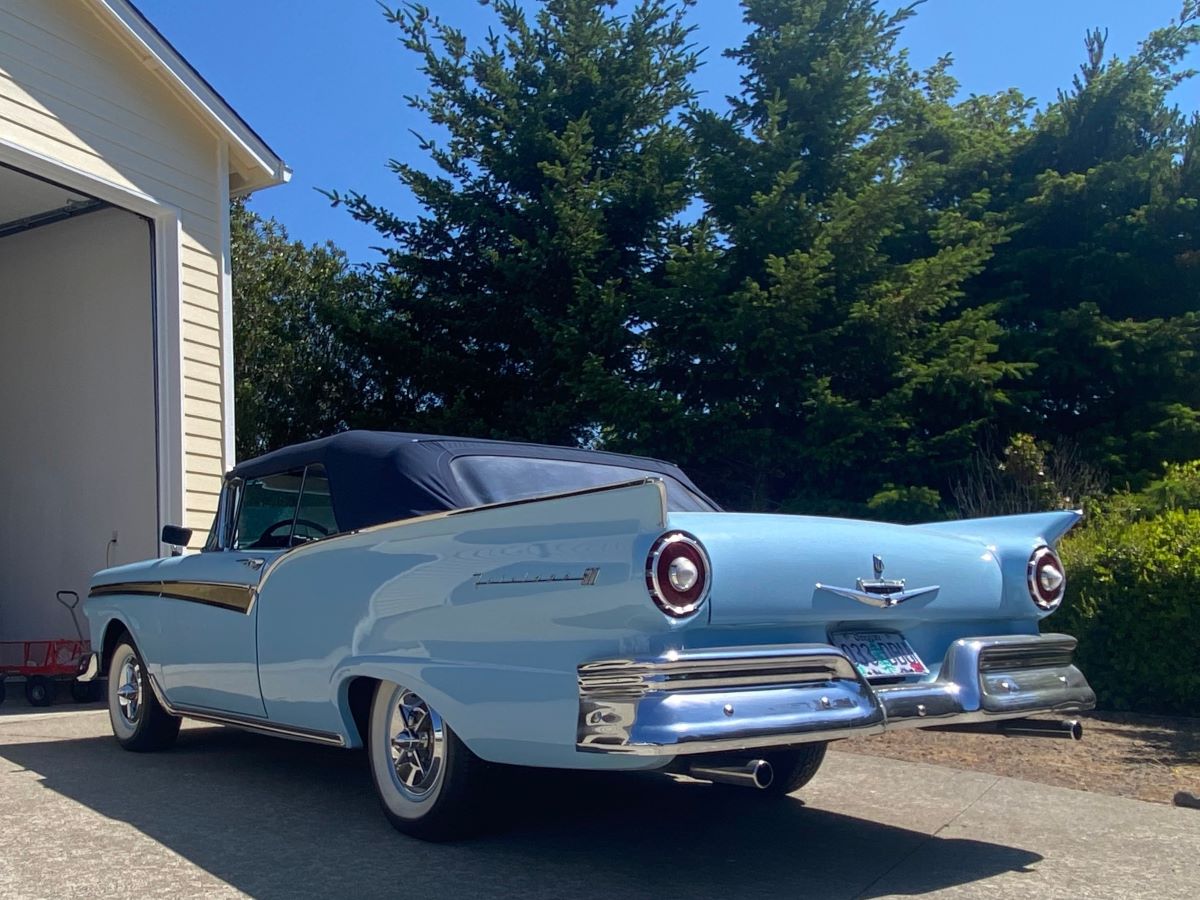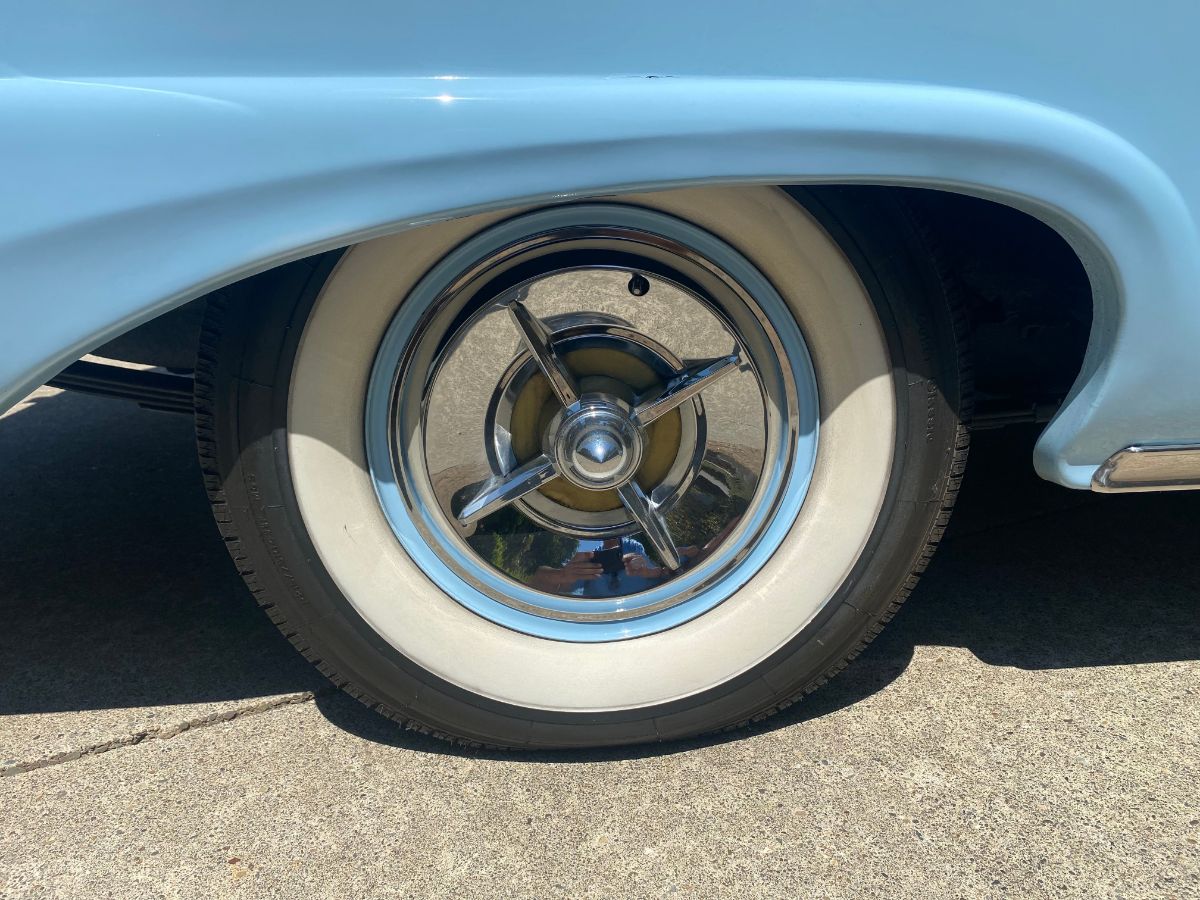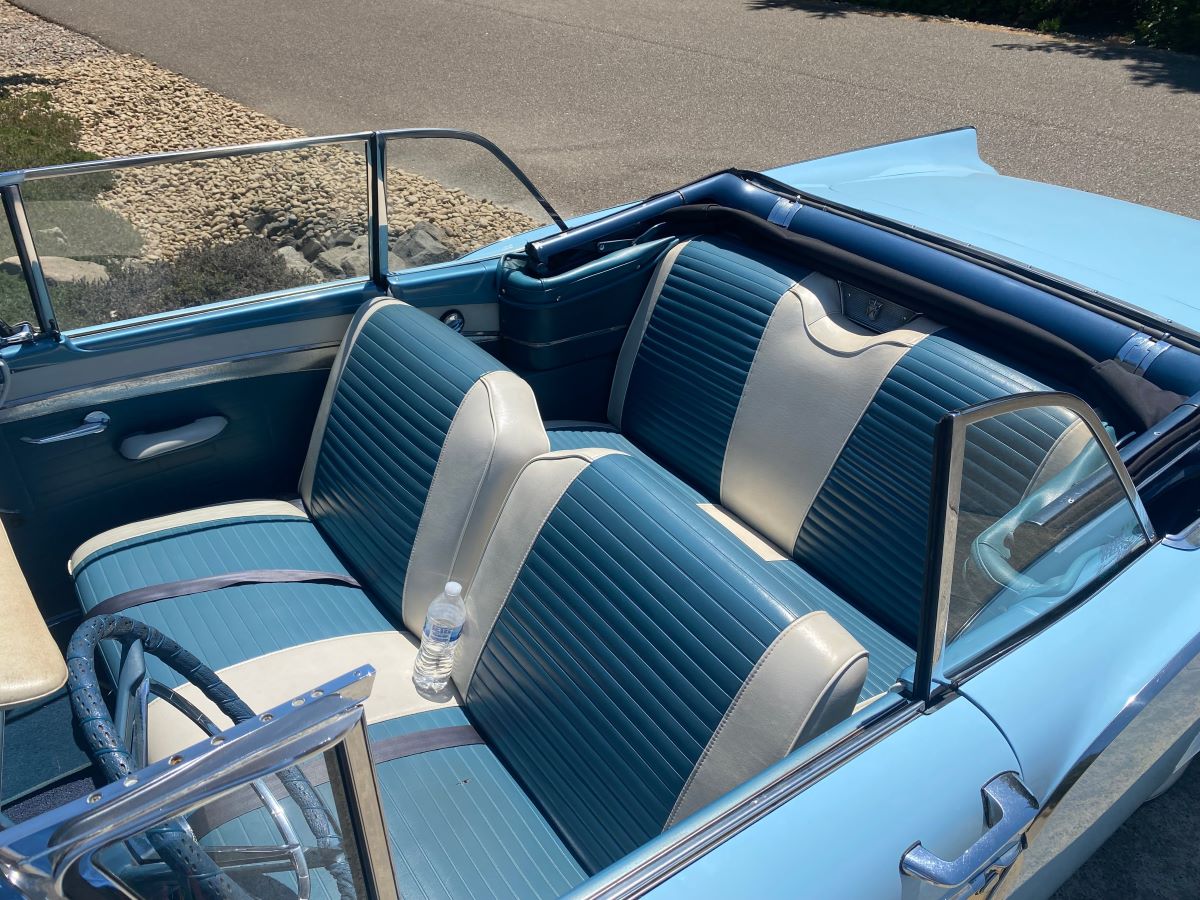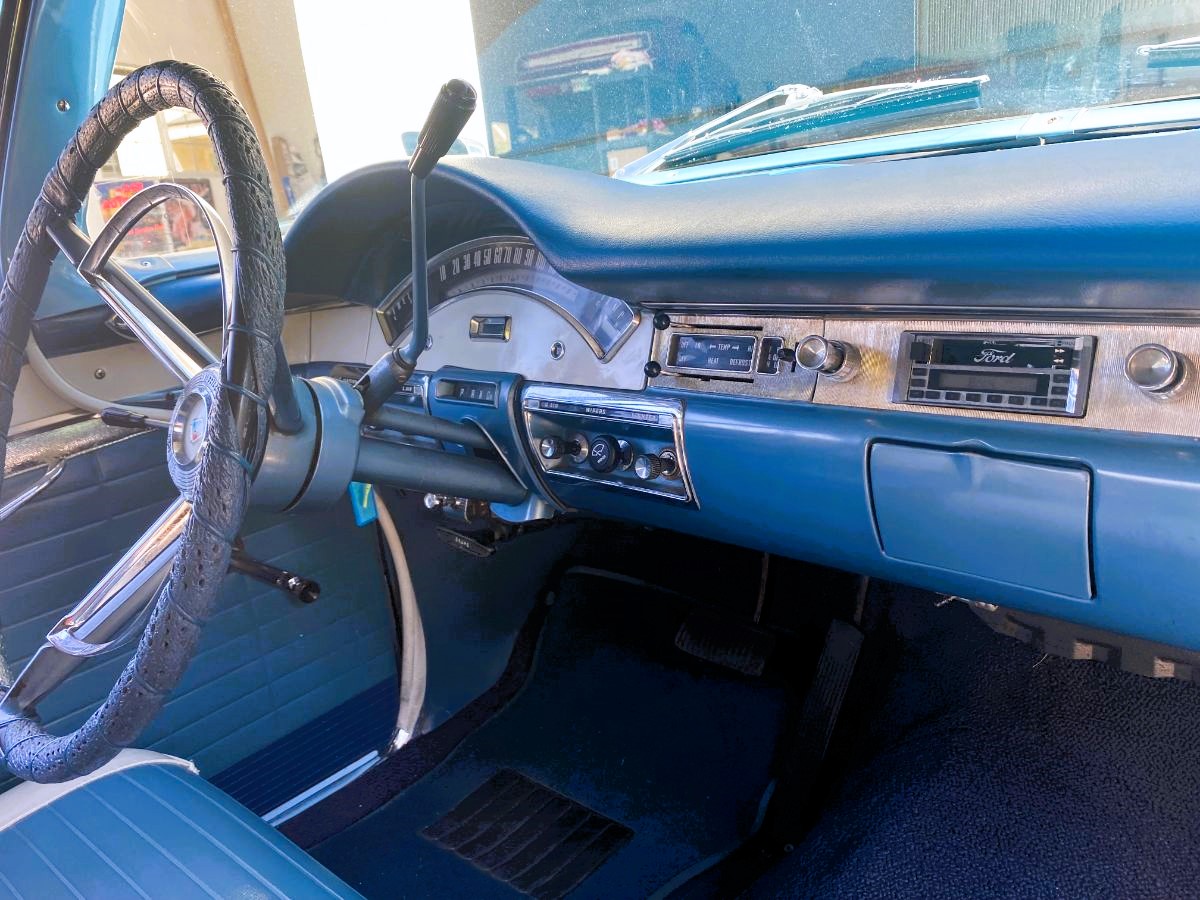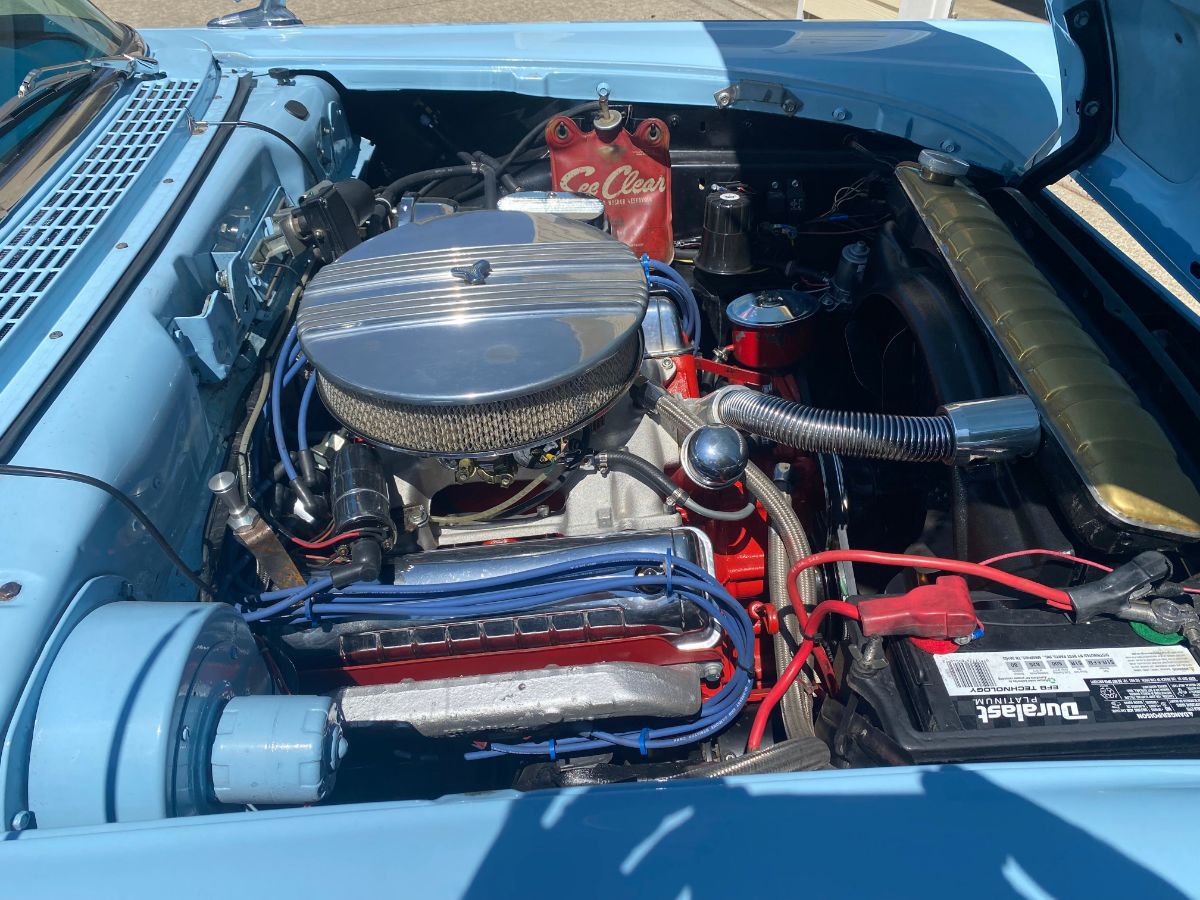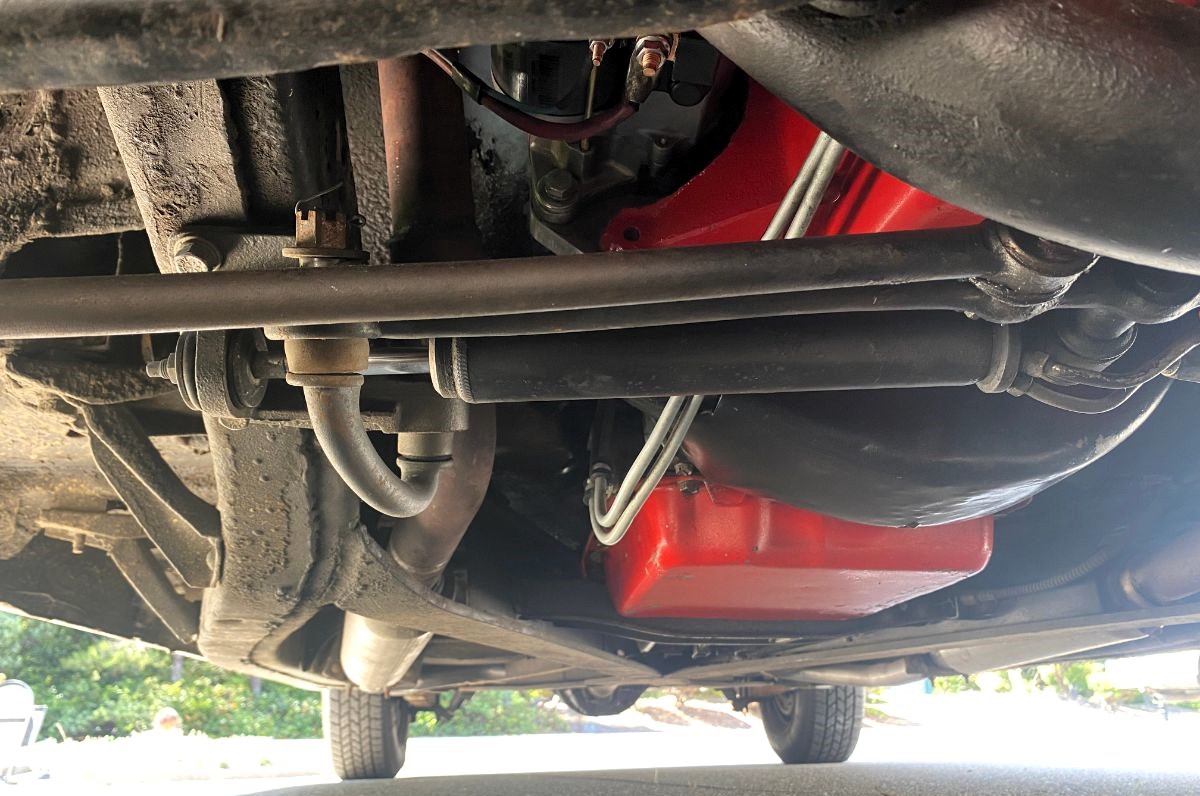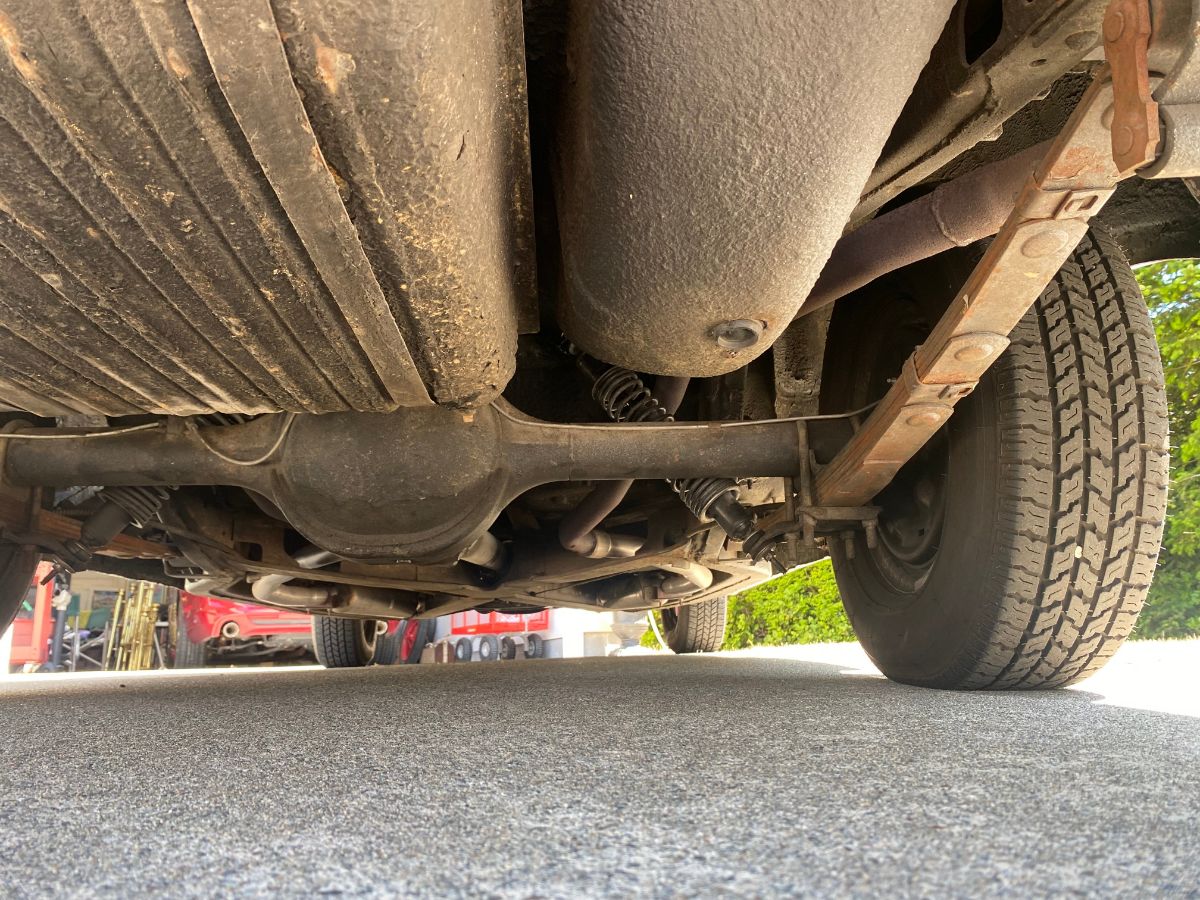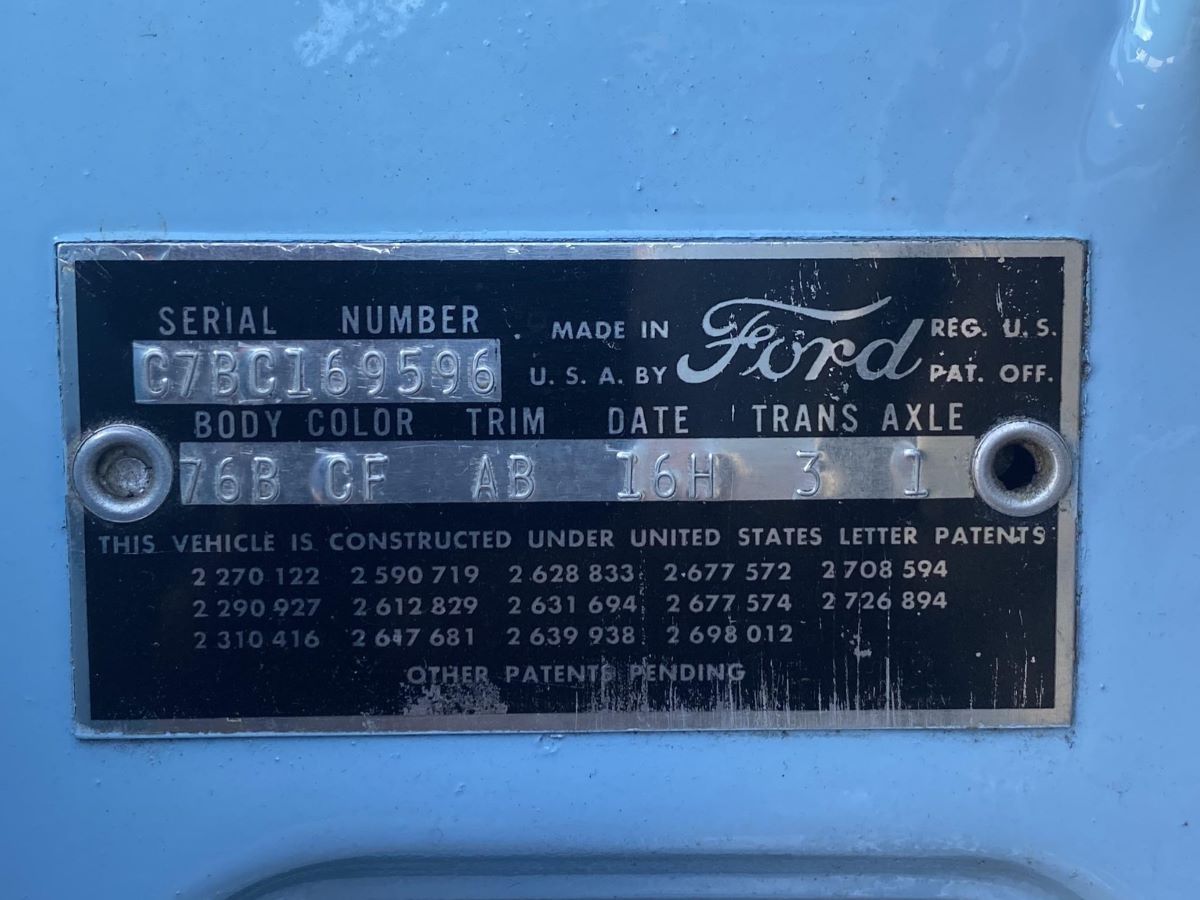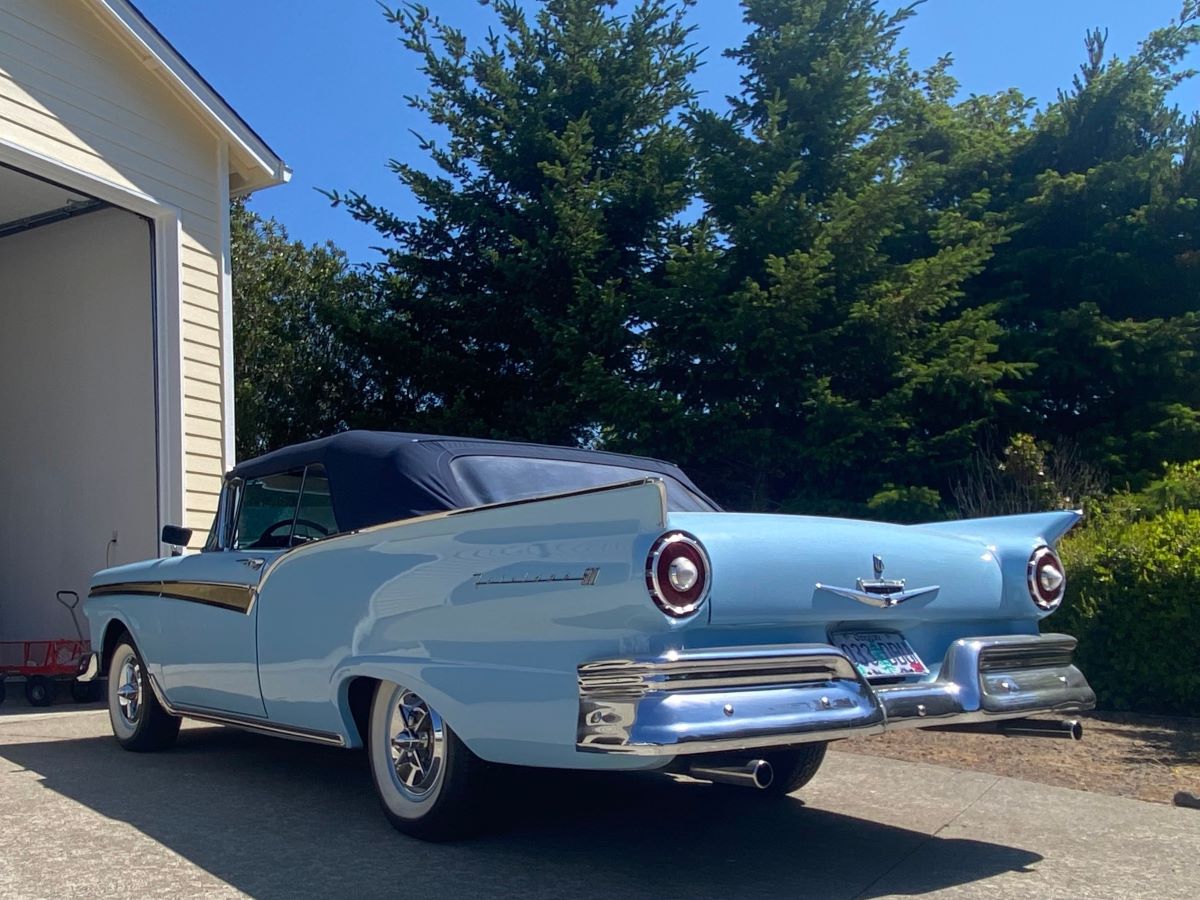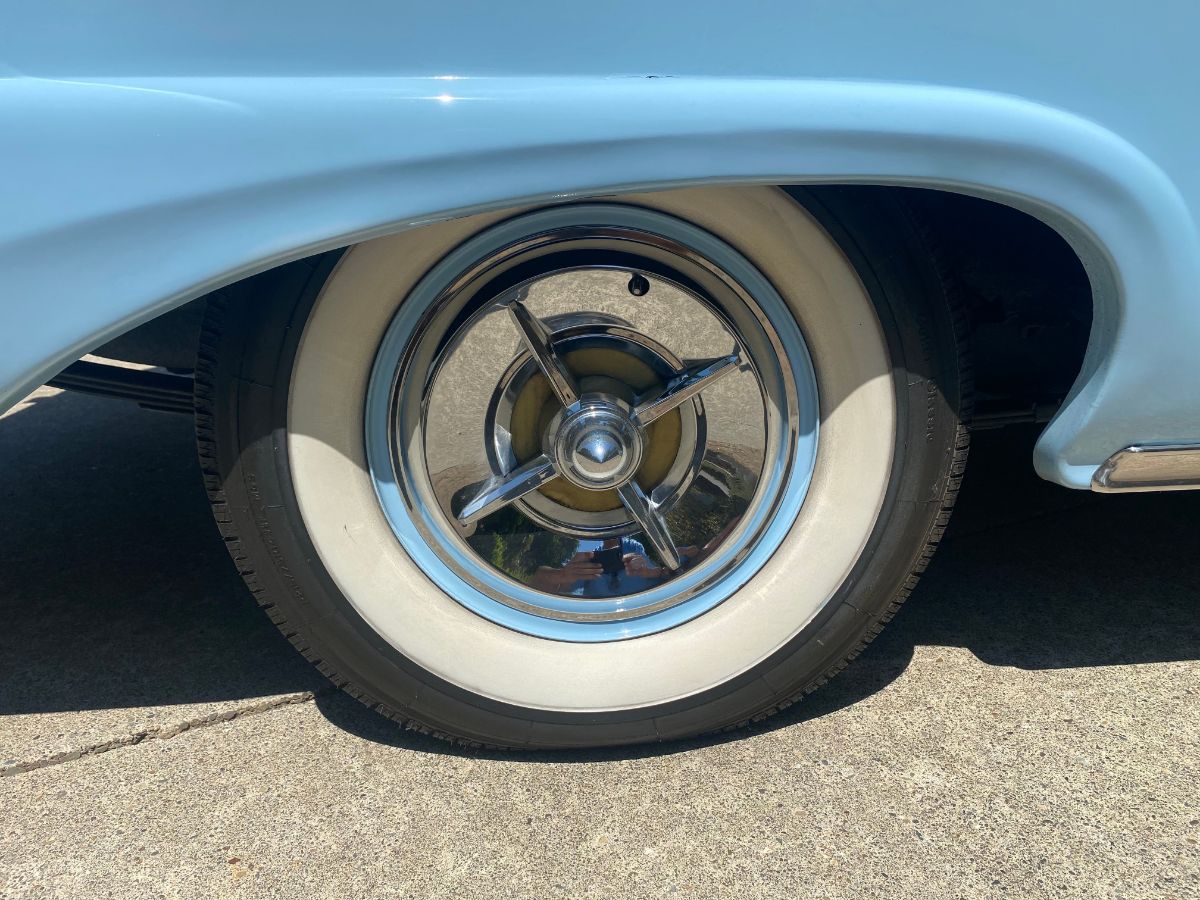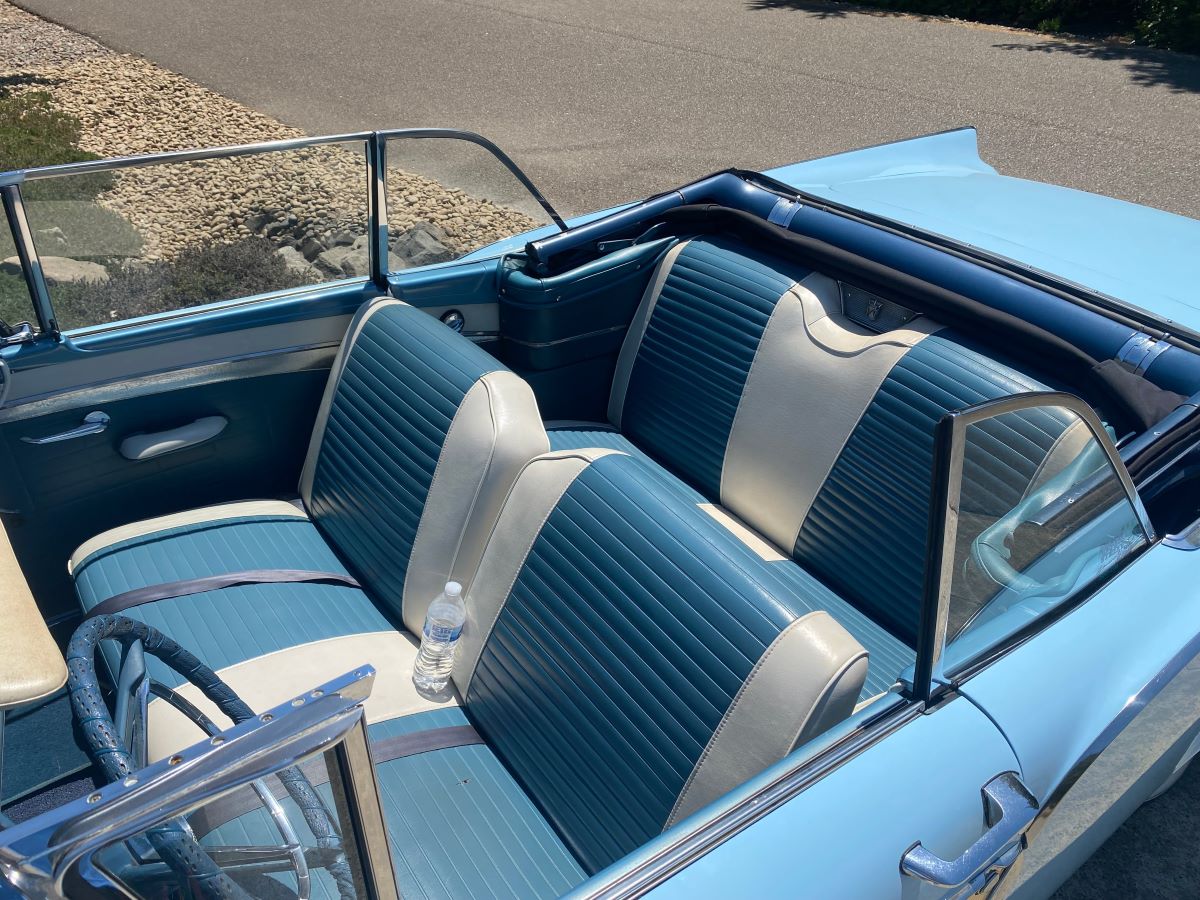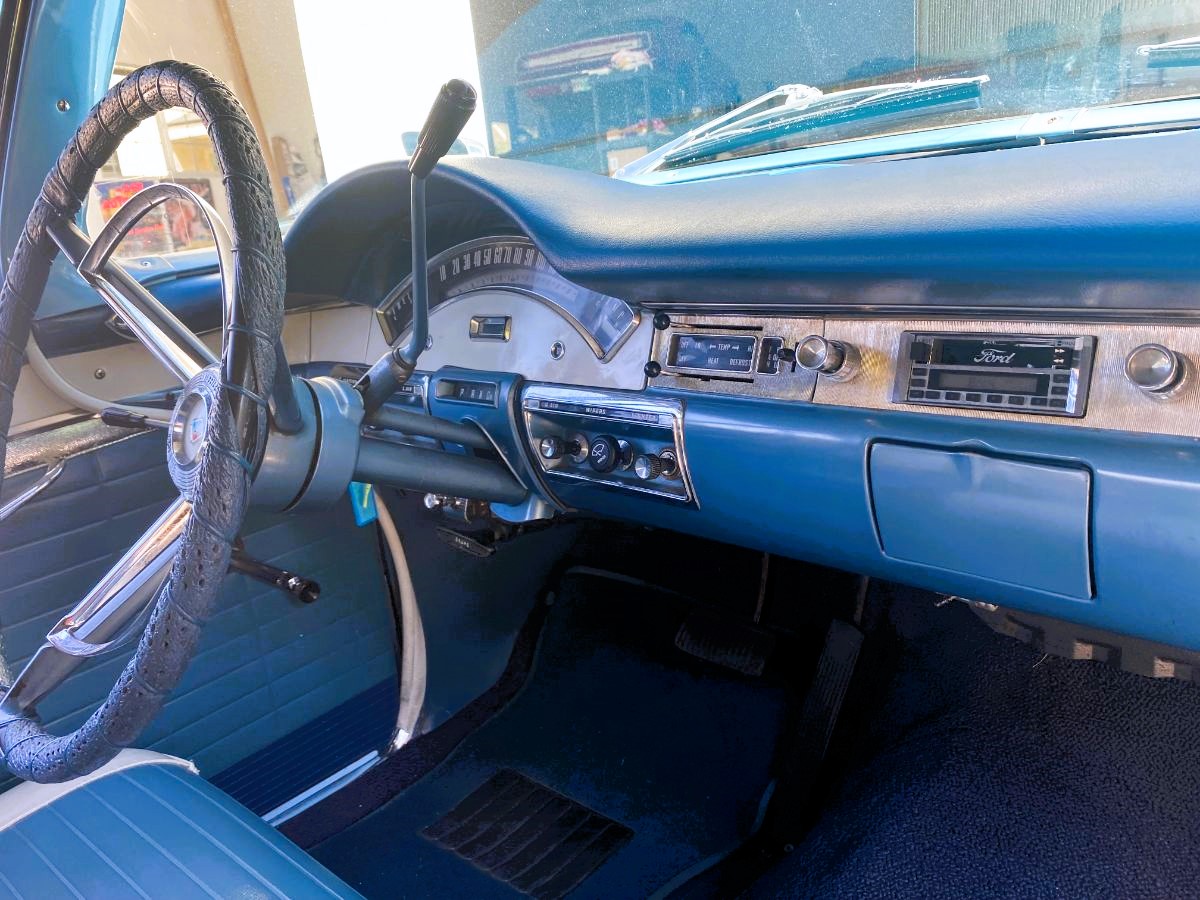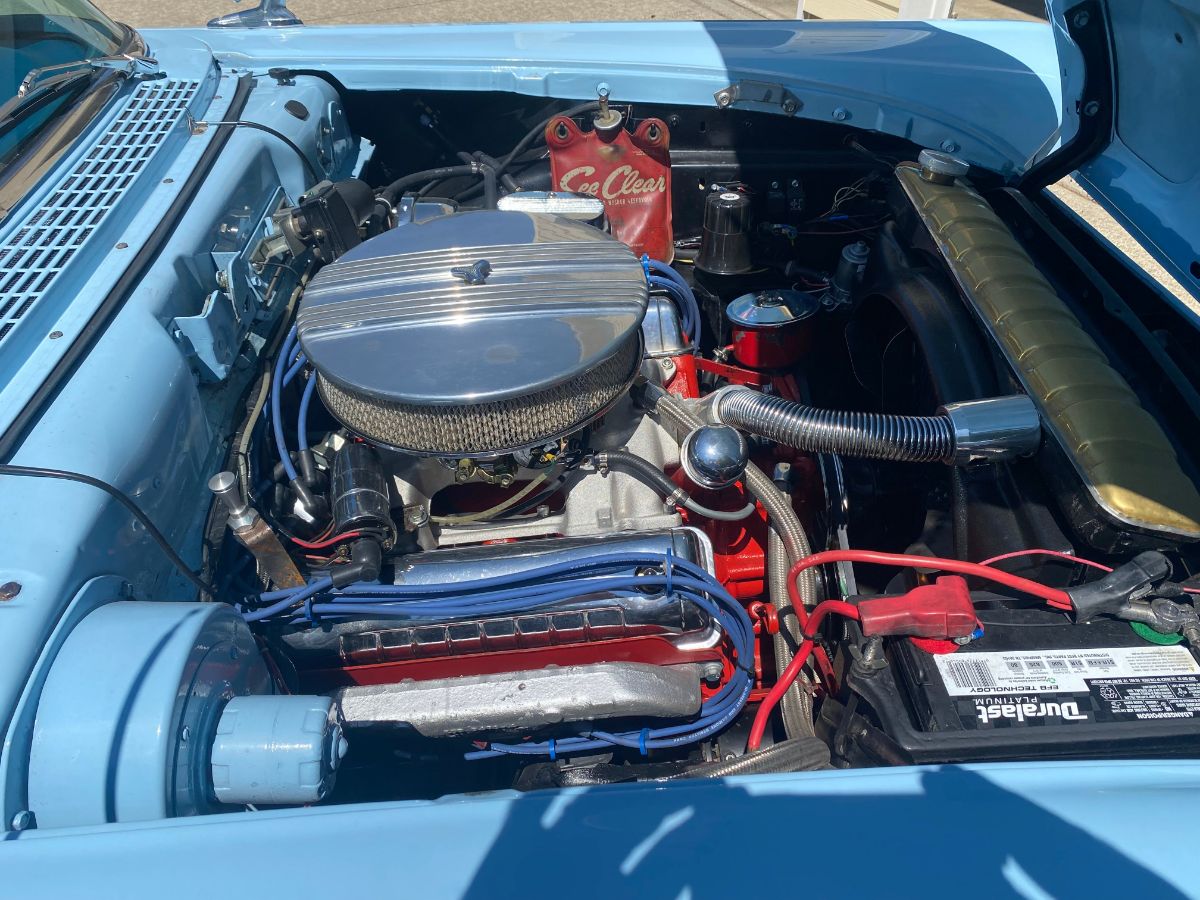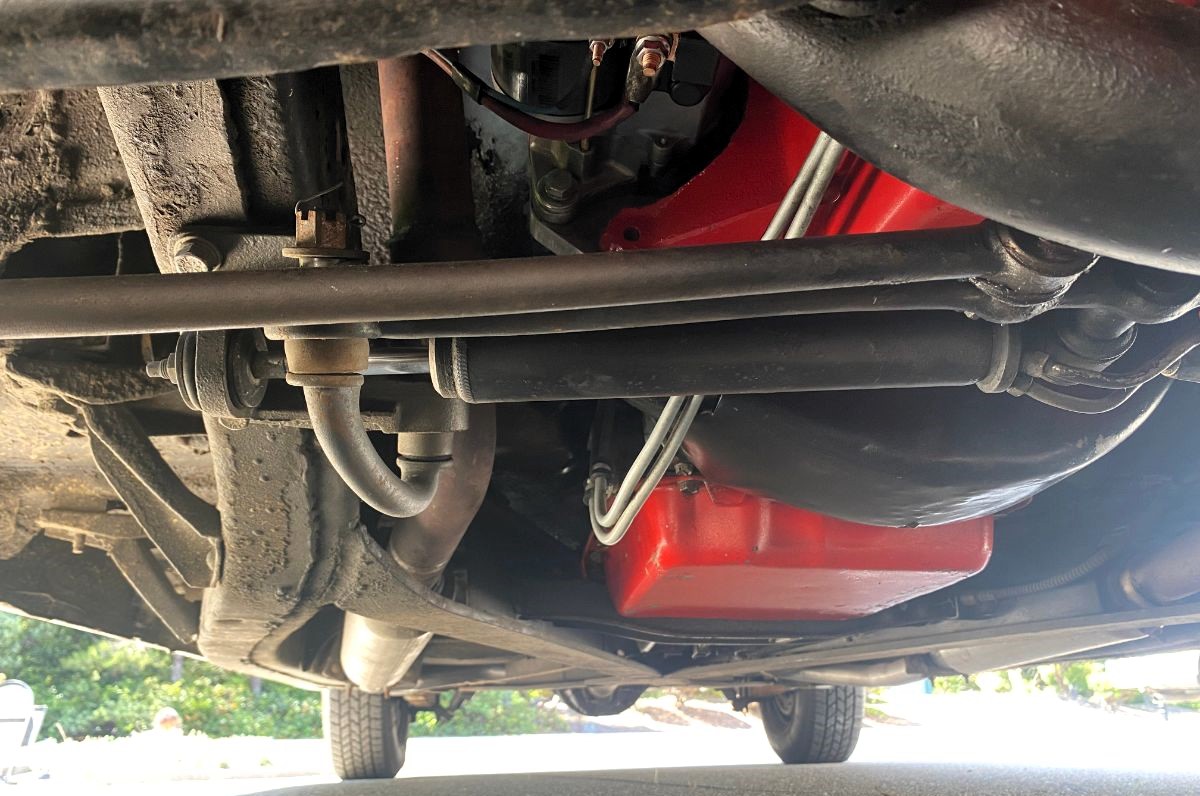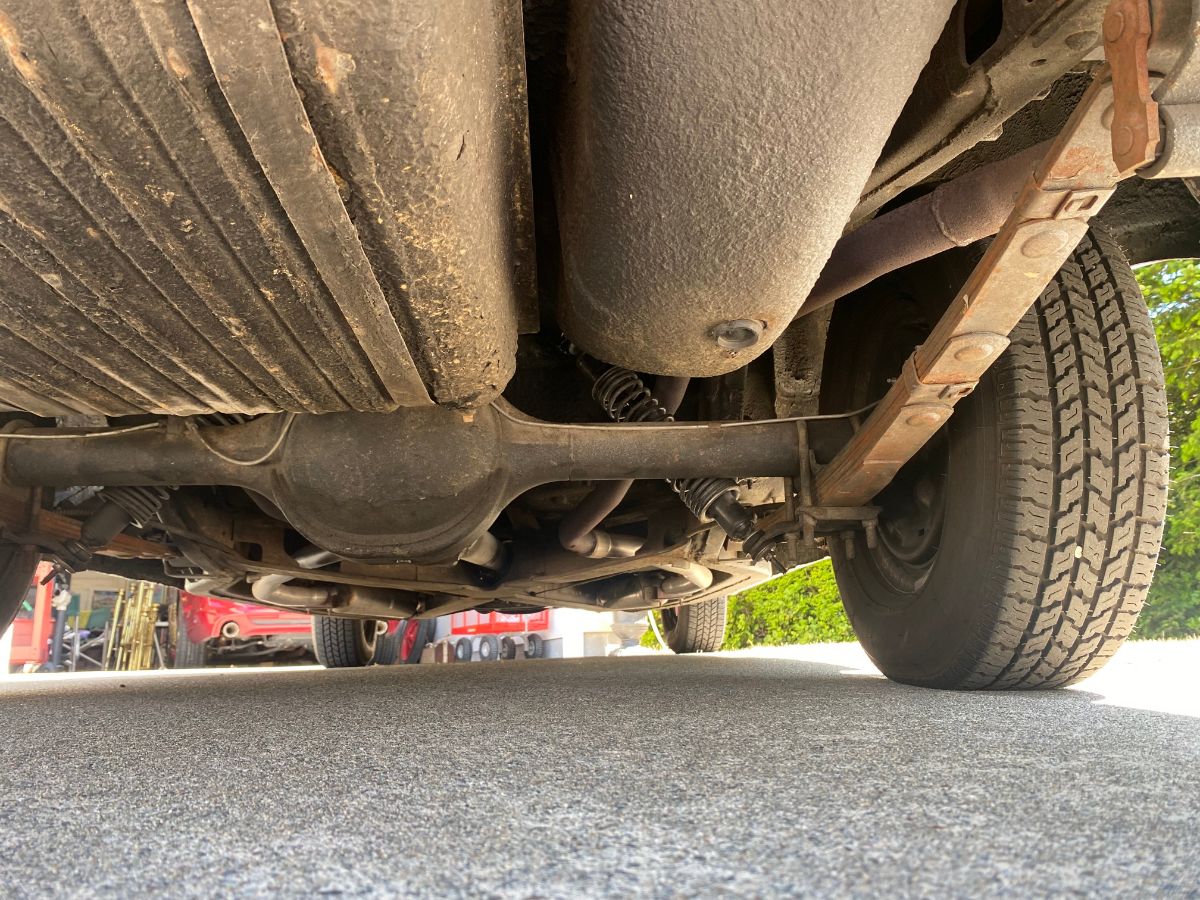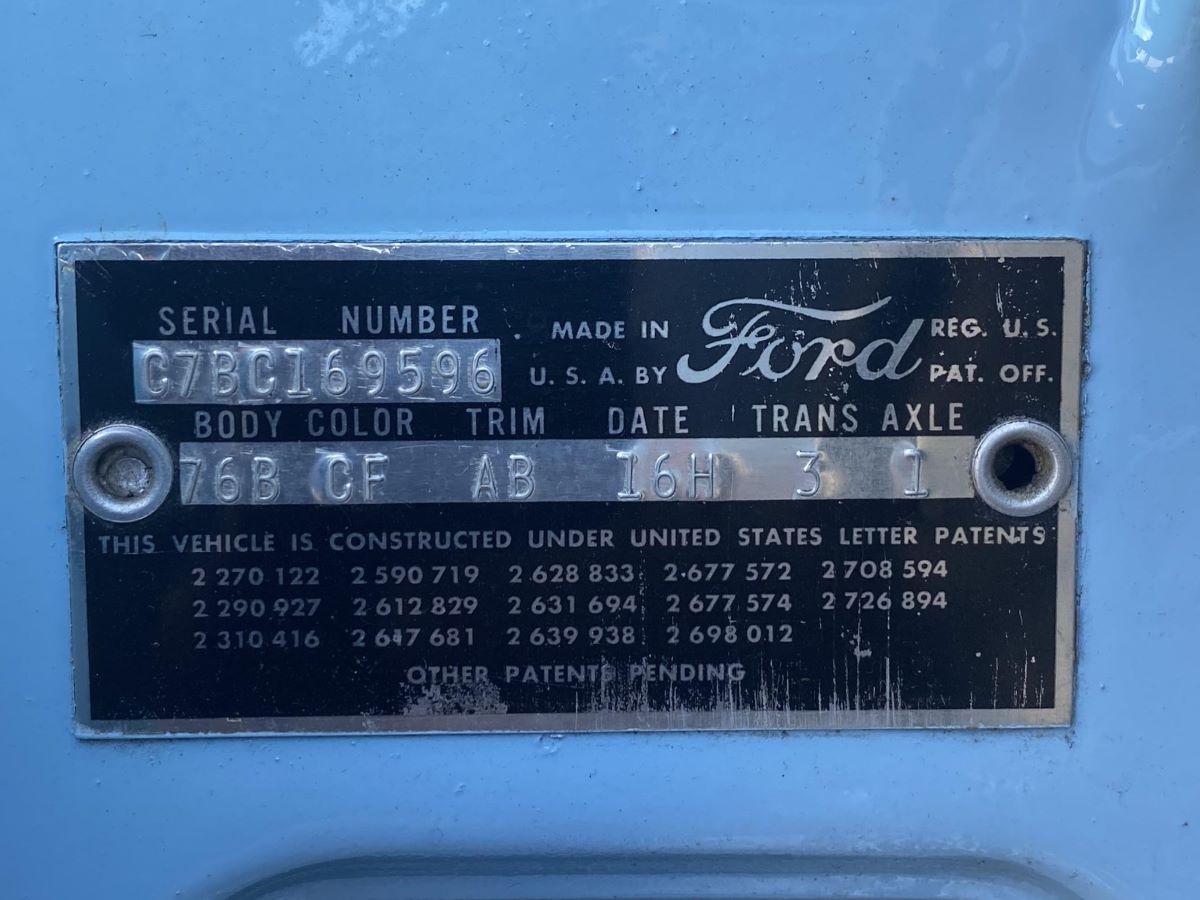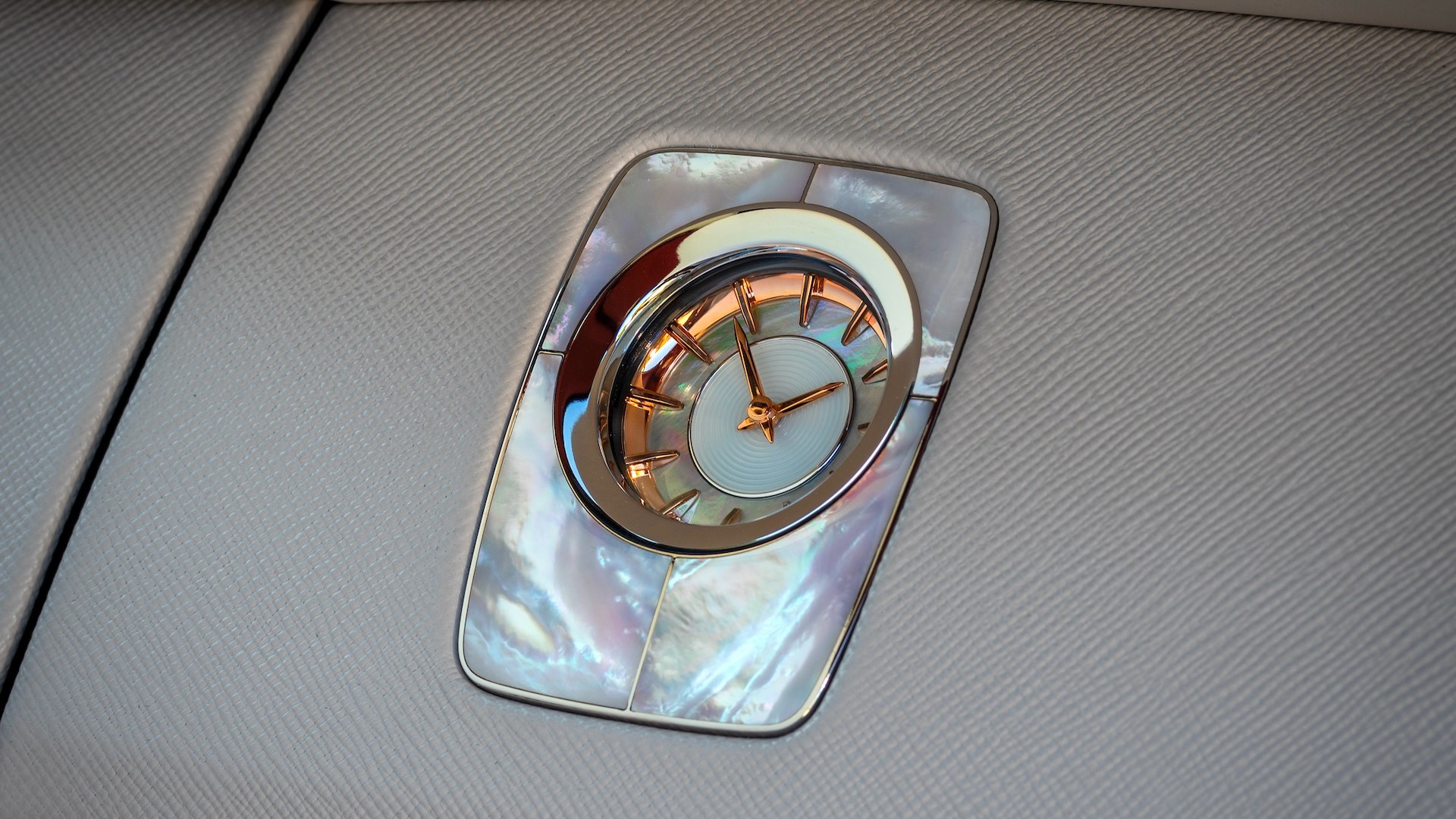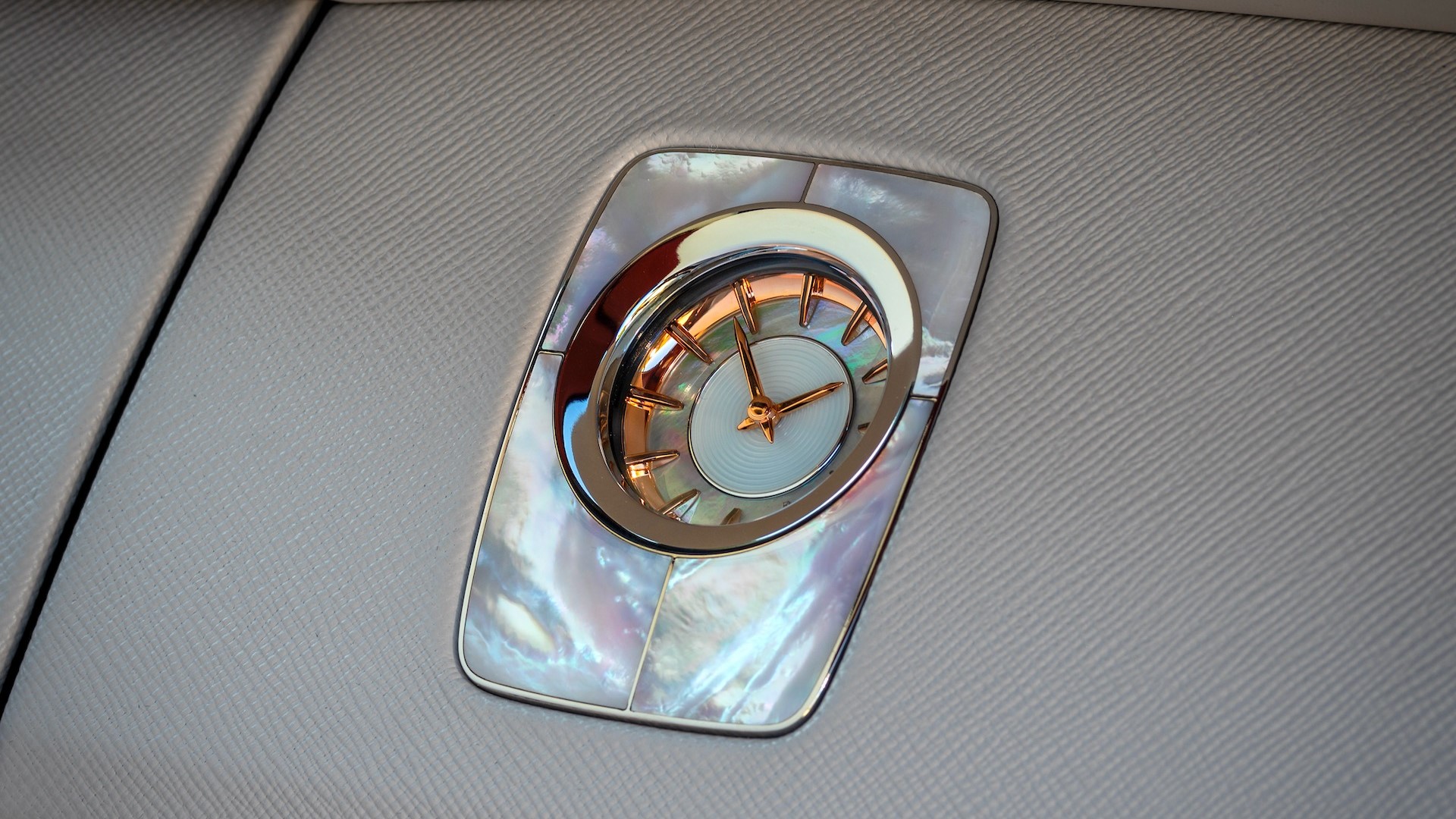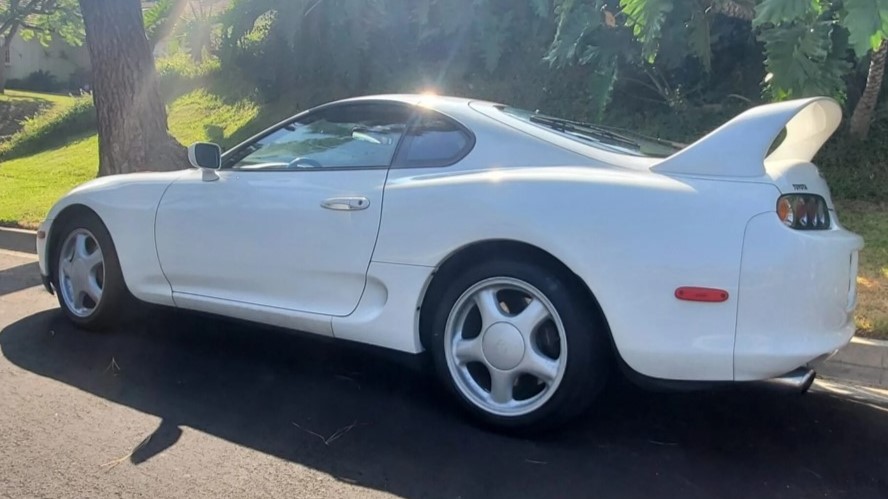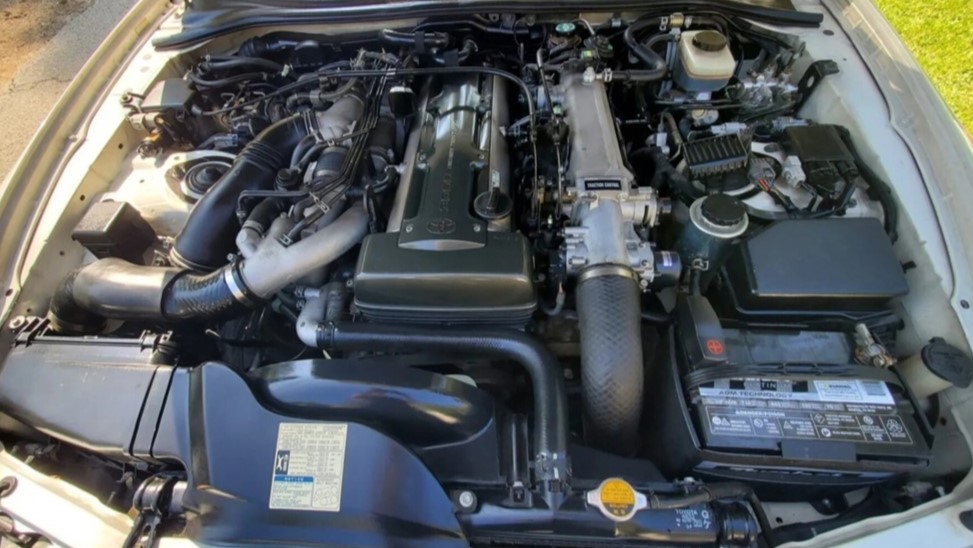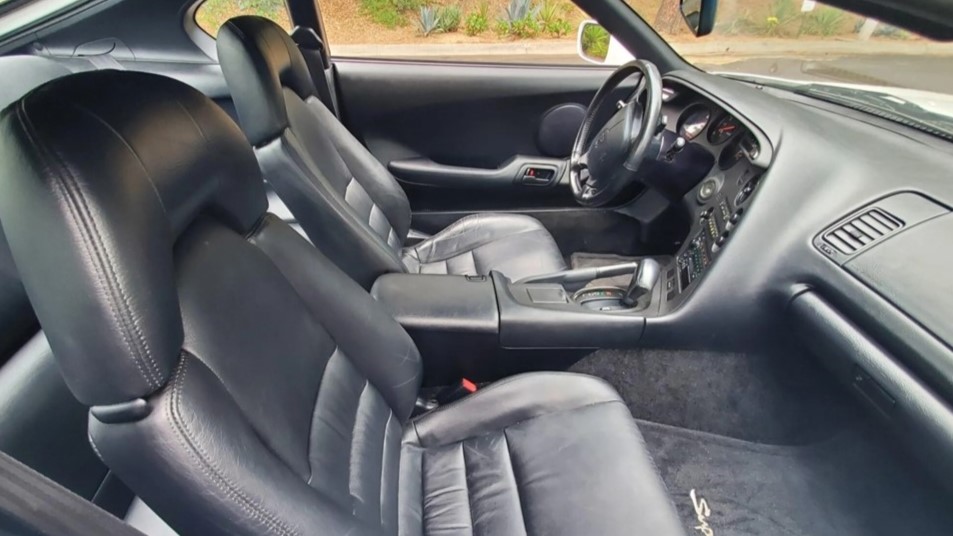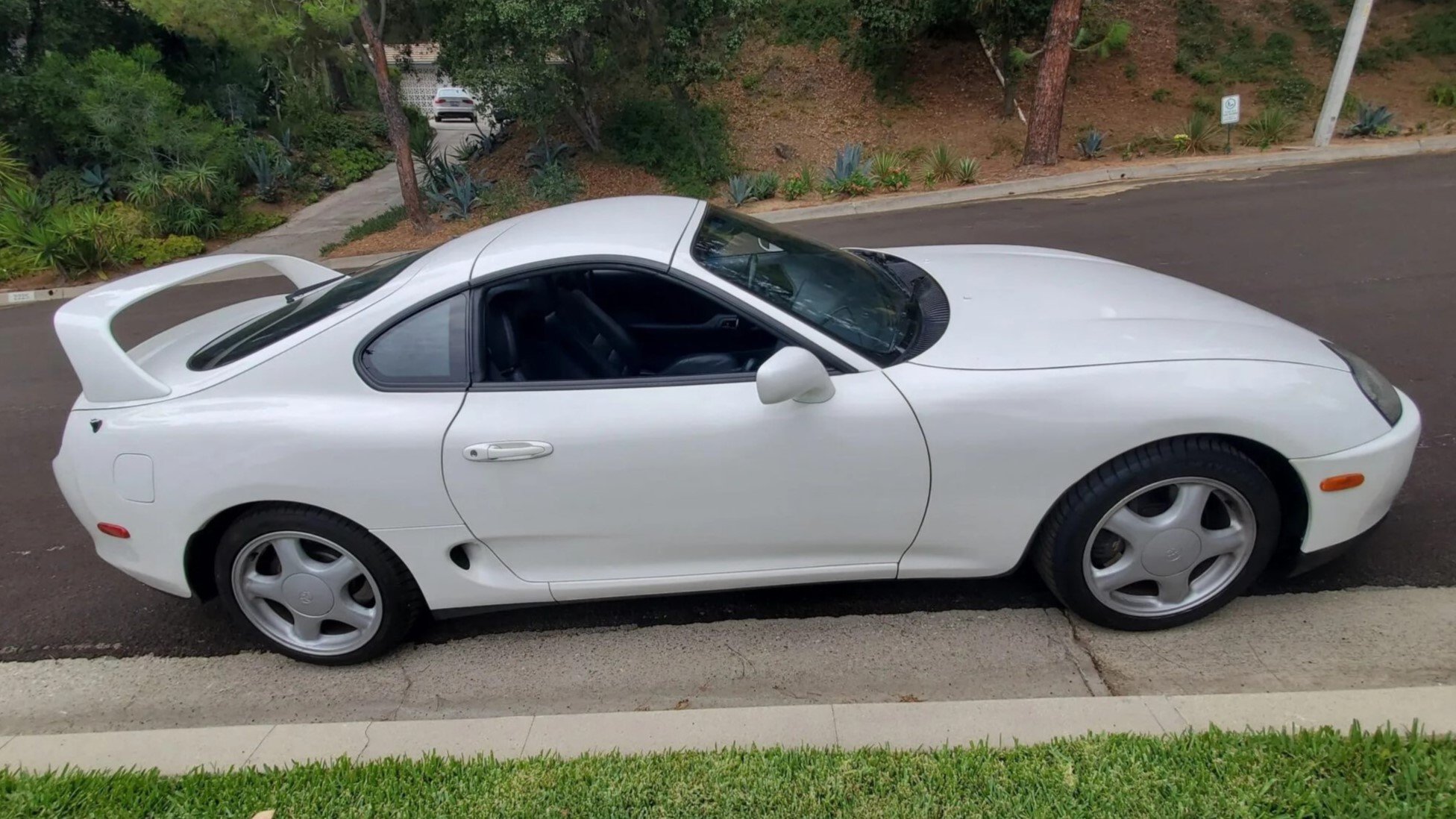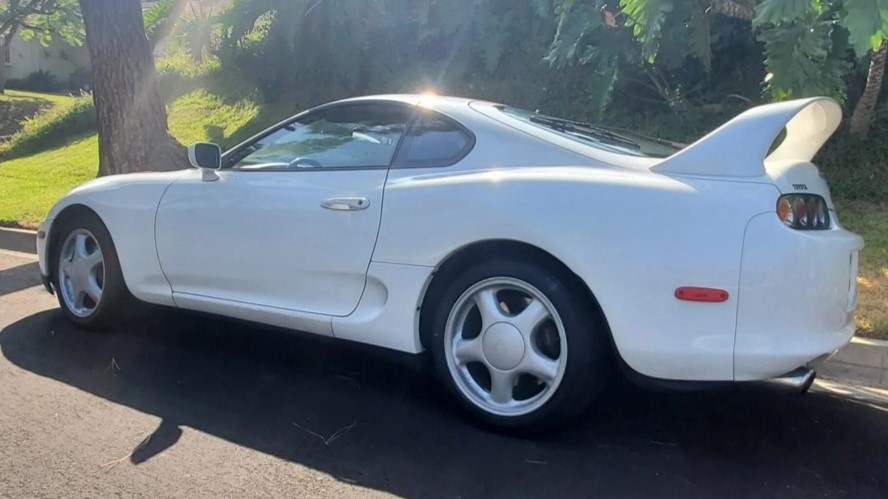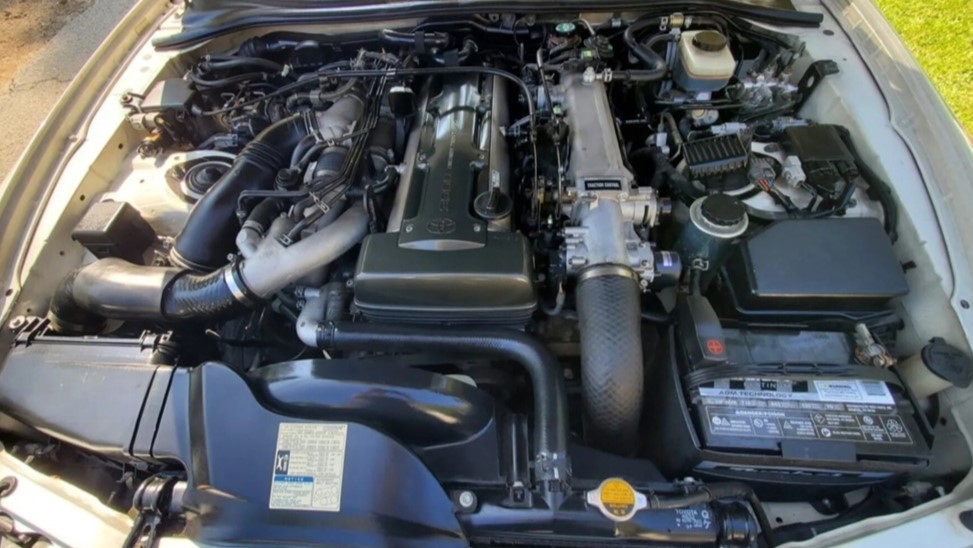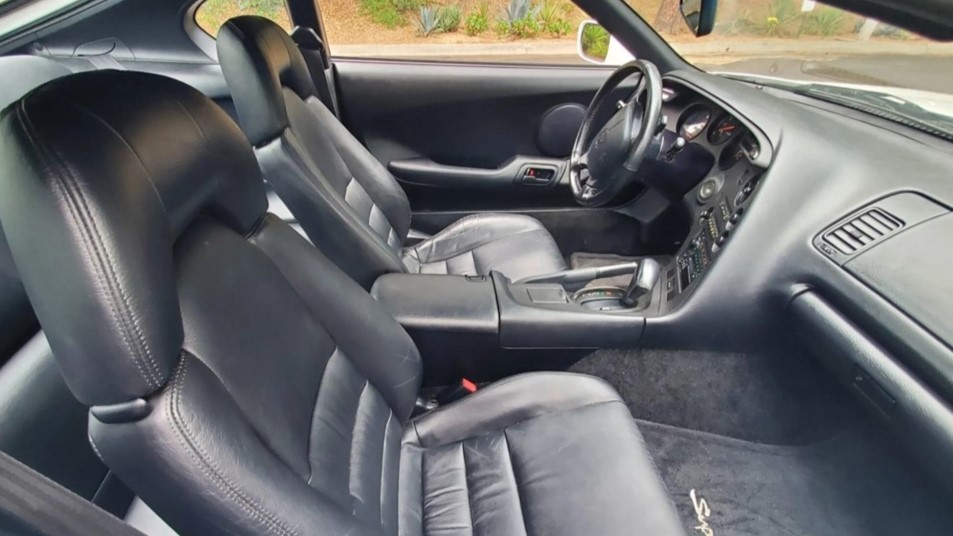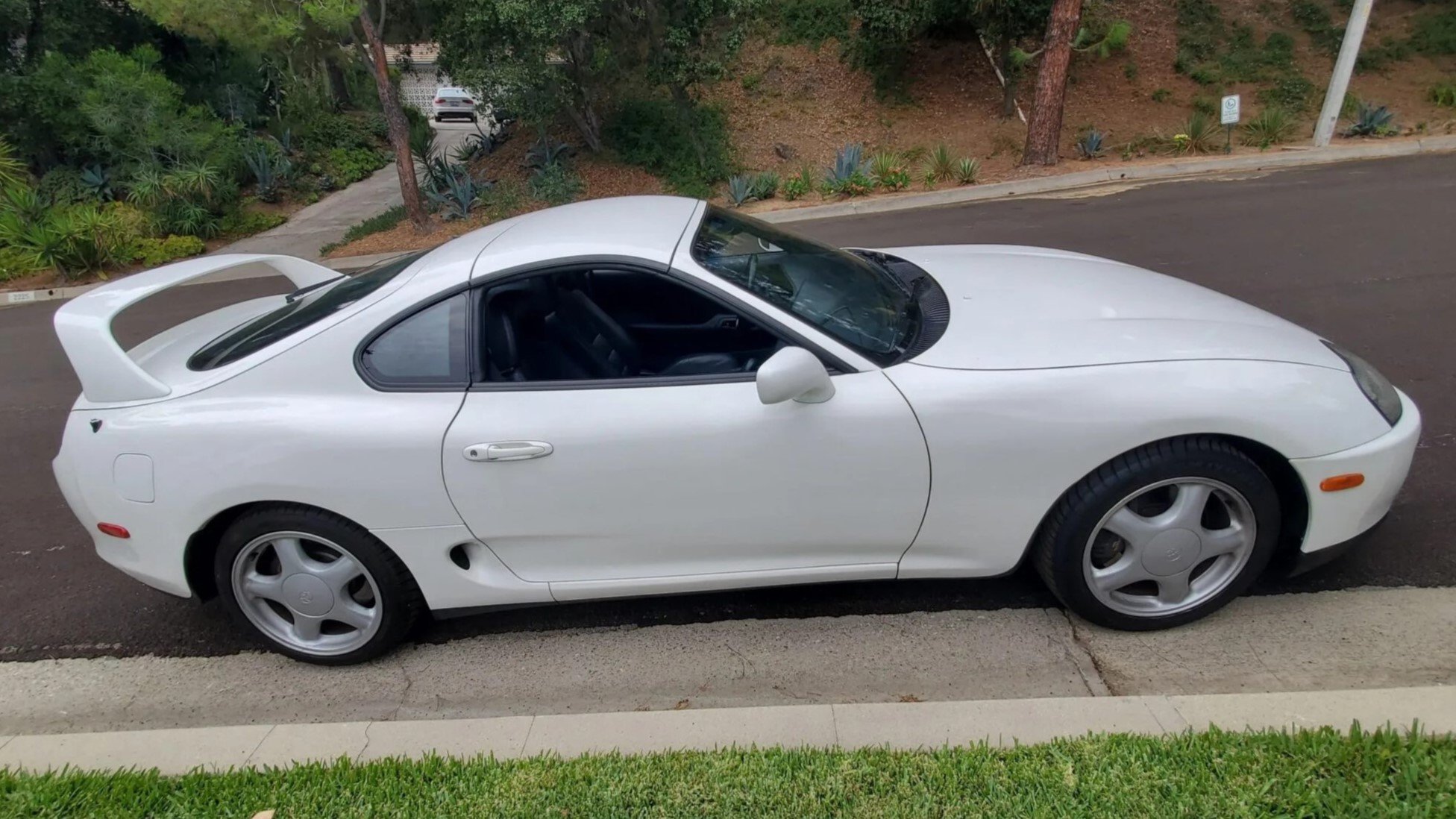From Stellantis backward, you can trace the history of Chrysler through the generations — including the fallen flags of defunct manufacturers that were eventually absorbed under the sign of the Pentastar. Here’s how: The veteran independents Hudson and Nash merged in 1954 to create American Motors, which in turn was swallowed up as a Chrysler holding in 1987 after a short, lamentable stint of Renault partnership. So, it makes perfect sense that this stunning, Mopar-motivated street rod is based on a 1947 Hudson Super Six coupe, one of 49,278 Super Sixes that Hudson produced that year.
So there’s your Chrysler lineage. It’s expressed spectacularly in this Hudson, which was sinking into the Illinois soil, in primer from an interrupted restoration, when the owner of this car spotted its hulk offered for sale via Hemmings Auctions. After about $2,000 changed hands, the rusted Super Six was towed to the Harvard, Illinois, shop of Schwartz Performance, which transformed the Hudson into the high-tech Mopar screamer you see here. It rides on a proprietary chassis that gives it canyon-carver handling, and is now powered by an upgraded modern Hemi crate engine that’s estimated to churn out some 500 horsepower.
![1947 Hudson Super Six Restomod - Raw Materials]()
The raw material. The Super Six coupe had been sunk into the dirtPhoto: Provided by Schwartz Performance
Schwartz Performance specializes in very high-end street rod and muscle car projects, using its custom-built G-Machine chassis, which incorporates contemporary handling technology and exists for more than 150 unique applications. Regrettably, a 1947 Hudson wasn’t one of them, but we’ll get to that. Max Lown of Lake Forest, Illinois, had already sampled Schwartz Performance’s quality when it slipped a G-Machine chassis under his 1970 Buick Skylark, which also received Chevrolet LS7 power and an estimated 600 horsepower. The job led Max to praise the shop and its proprietor, Jeff Schwartz.
“Jeff had done a great job on the Buick, and I’ve always been interested in a street rod,” Max explained. “I have an interest in Hudson, going back to the early days of NASCAR. I was looking online in the Hemmings Auctions and looking at Hudsons, which are usually either pristine condition or wrecks. This wreck was right near me in Crystal Lake. The guy with it was smart enough to take the fenders off and hang them inside his garage. Jeff went to look at it and said, ‘You’ve got to do this. This car would be gorgeous.’ And I told him, go ahead. The car had just rusted into the mud. The frame was gone.”
![1947 Hudson Super Six Restomod - original frame and engine]()
The original Hudson inline-six and frame. Note the degree of factory engine setback.Photo: Provided by Schwartz Performance
Regardless, the Super Six was a complete car that was partly finished. The basic plan was to reimagine the Hudson as a modern car with copious power and sports car handling. In keeping with Hudson’s heritage, the decision was made to go with Chrysler power. “I said, ‘We could put an LS or an LT into it, but they’re a dime a dozen,’” Jeff tells us. “And it’s kind of weird putting a Ford Coyote into a Hudson. So, I said, ‘Let’s do a Hemi.’”
Though somewhat disassembled alongside the previous owner’s shop, the Super Six was mostly there except for one missing piece of rocker trim. Jeff was surprised to learn that the Hudson had a front-hinged hood, noting that the setback of its standard inline-six engine transformed it into “…a front-mid engine car. The engine was so far back that if they used a conventional hood, you wouldn’t be able to reach anything.”
![1947 Hudson Super Six Restomod - Chassis]()
Schwartz’s own G-Machine chassis uses ladder frame design and tubular gusseting for additional rigidity.Photo: Provided by Schwartz Performance
The Hudson’s primered body had deteriorated somewhat from being planted in the mud. The car was chemical dipped, which was when, as Jeff put it, “the surprises come out.” In this Hudson’s case, that meant doing metal repair from the bottom up, including fabrication of a new floor pan, inner fenders, and other sheetmetal, using measurements to apply the correct steel thickness. A custom firewall was necessary so the Mopar 6.4-liter Hemi crate engine could be squeezed into place. Mini wheel tubs were also installed at the rear to accommodate the 335-section rear tires.
The Hemi was outfitted with custom “392” rocker covers, and Schwartz Performance fabricated an adapter that would link the drive-by-wire throttle body for the fuel injection to a four-barrel intake manifold. With a free-flowing exhaust that included Schwartz-fabricated headers and finished with an open air cleaner, Jeff guesses that the Hemi produces “500 horsepower, easy.”
![1947 Hudson Super Six Restomod - Engine Bay]()
The ignition coils were moved off of the rocker covers to give the 392 Hemi a more traditional look. Schwartz’s fabricated headers and exhaust promote deep breathing.Photo: Matt Lankford
The choice was made to use a Wilcap adapter to pair a General Motors 4L60E automatic overdrive with the Hemi due to the availability of aftermarket programming software for the GM transmission; a US Shift computer was used here. A custom steel driveshaft linked the powertrain to a 9-inch Moser rear that was outfitted with 31-spline axles, Baer Brakes hubs, and a TrueTrac differential turning a 3.70:1 gearset.
![1947 Hudson Super Six Restomod - Floor/Trans Tunnel]()
This fabricated transmission tunnel shows the high quality of welding and metal work performed.Photo: Provided by Schwartz Performance
The heart of this Hudson, however, is its G-Machine ladder-frame chassis laid out specifically to match the mounting points on the Hudson body. As Jeff explained, “The old chassis was riveted together and the rivets loosen with time, because they were never intended to last over 50 years.” The shop made a 3D scan of the Super Six’s underbody and used the scan to determine the chassis dimensions. Ridetech single-adjustable coilover shock absorbers were combined with a Flaming River power rack-and-pinion steering system, with an eye toward additional suspension travel when compared to the more common Mustang II-style front end setup. Fourteen-inch Baer brake rotors were installed at all corners, with six-piston calipers – Jeff said the original Hudson C-channel frame would have likely deformed from the braking forces, plus the Hemi’s copious torque. Splined anti-roll bars were installed front and rear. BFGoodrich Rival S tires, 275 section in front and 335 at the rear, on 18-inch Forgeline JO3C wheels complete the underpinnings.
![1947 Hudson Super Six Restomod - Interior]()
Photo: Matt Lankford
Once the body was repaired, the surface metal was treated with an etching solution, then primed and sealed. The paint and primer were from PPG, and the maroon finish was sprayed on in two base coats with three to four coats of clear. The finish was then wet-sanded working up to 2000-grit paper before buffing. All the Hudson brightwork was restored and reused while custom Hemi logos were added to the sides of the front-hinged hood. The big hood now also has an inside cable release.0
![1947 Hudson Super Six - Rear 7/8]()
Photo: Matt Lankford
The interior was covered with distressed butterscotch-dyed leather stretched over street rod seats of uncertain sourcing. The factory dash was used, with a Schwartz-made lower steel section that incorporated outlets and controls for the Vintage Air Gen IV climate system. The original instruments were sent out to a Chicago-area Corvette shop for conversion to 12-volt electronic operation. A Flaming River tilt steering column and Lokar floor-mounted shifter were also installed. After snapping a photo of a Hudson emblem, Jeff commissioned Con2R of Beaverton, Oregon to create a smaller-diameter steering wheel, wrapped in leather, and with the Hudson logo on the horn button.
Max is justifiably proud of his very atypical Hudson street rod and its exquisite execution. He considers the build, which took two and a half years to complete, to be triumphant. As he put it, “The car is unbelievably beautiful. The guys in the shop tell me it’s the best car they’ve ever done, and they’ve done a lot of cars.”
![]()
Gallery – 1947 Hudson Super Six
![]()
![]()
![]()
![]()
![]()
![]()
![]()
![]()
![]()
![]()
![]()
Gallery – 1947 Hudson Super Six
![]()

